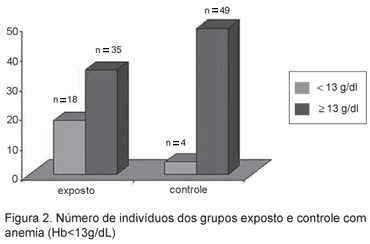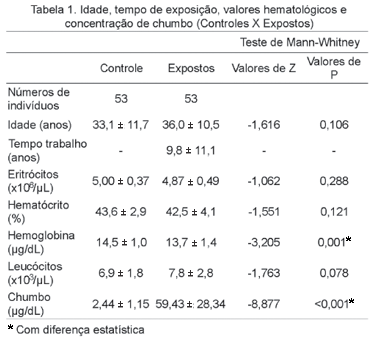Lead is one of the most abundant elements in nature. Currently, it is widely used in the manufacture of batteries, brass and bronze, radiators, solders, cables, paints and dyes, ceramics, and ammunition, among other things. Lead intoxication is called saturnism and is most often related to professional activities. Lead can cause neurological, hematological, renal, cardiac and reproductive disorders. The aim of this study was to compare blood parameters of 53 workers with work-related exposure to lead with a control group of individuals not exposed to chemical or physical agents. Serum lead levels, red blood cell count, hematocrit and hemoglobin levels and age were evaluated. In respect to serum lead levels, of the group with work-related exposure to the metal, 20.8% of the workers had values of up to 40 µg/dL, 35.8% presented with values between 40 µg/dL and 60 µg/dL and 43.4% above 60 µg/dL. In the control group, all samples presented values below 40 µg/dL. A statistically significant difference was observed between the groups, as 7.5% of workers in the control group and 34.0% of workers with occupational exposure presented with hemoglobin levels lower than 13 g/dL. These results indicate that high levels of lead are related to hemoglobin values below the normal range.
Lead; work-related exposure; lead intoxication; anemia



